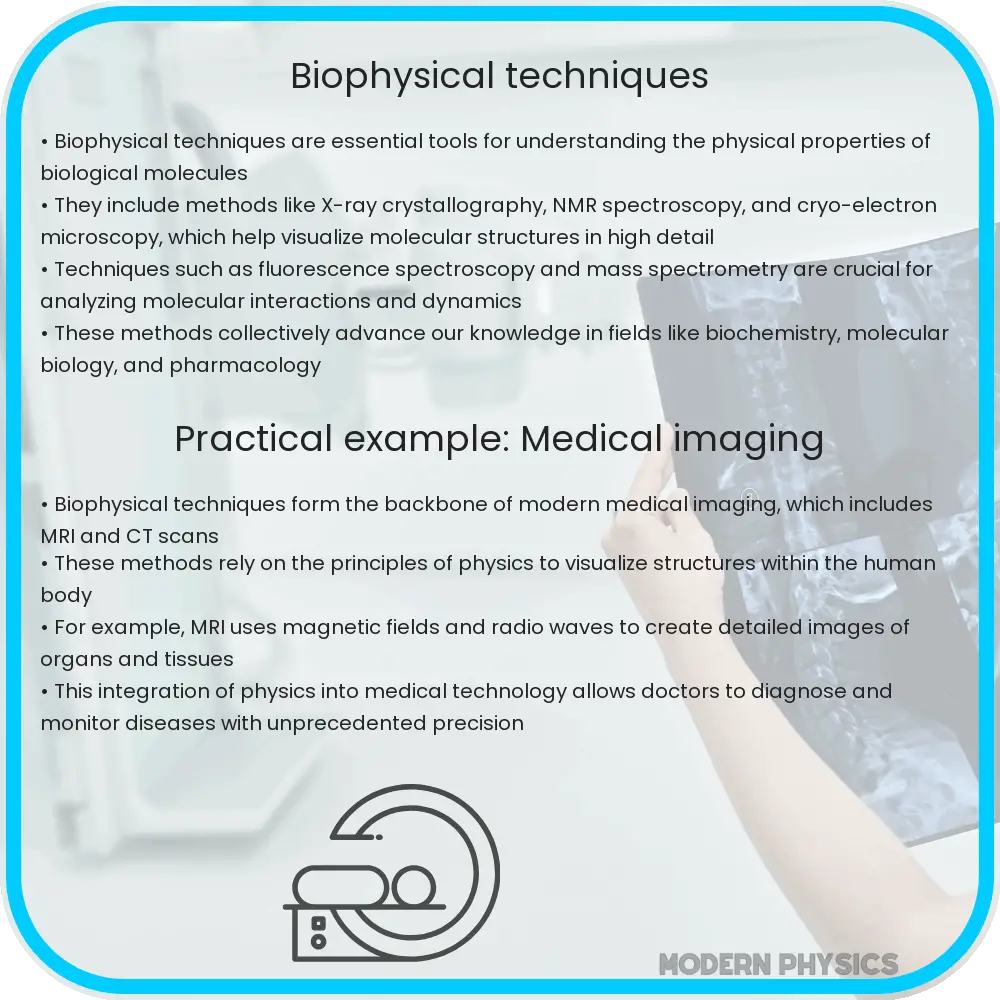Explore the precision and innovation of biophysical techniques in understanding biomolecules, driving advances in drug discovery and disease diagnosis.

Understanding Biophysical Techniques: Precision, Analysis, and Innovation
Biophysical techniques are indispensable tools in the field of molecular biology, biochemistry, and pharmacology, offering precise analytical capabilities to understand the structure, dynamics, and function of biomolecules. These techniques merge principles from physics and biology to provide detailed insights at the molecular level, driving innovation in drug discovery, disease diagnosis, and the development of biotherapeutics.
Core Biophysical Techniques and Their Applications
Several key biophysical techniques stand out due to their precision and the depth of analysis they offer. Each technique has its unique application, ranging from analyzing molecular interactions to determining the structure of complex proteins.
- X-ray Crystallography: It provides high-resolution structures of biomolecules, crucial for understanding their function and designing drugs that can interact with them effectively. By diffracting X-rays through a crystallized sample, researchers can map out the electron density of molecules and deduce their atomic structure.
- Nuclear Magnetic Resonance (NMR) Spectroscopy: NMR is pivotal for studying the structure, dynamics, and interactions of biomolecules in solution. It offers insights into how proteins fold, interact with other molecules, and undergo conformational changes.
- Cryo-Electron Microscopy (Cryo-EM): This technique has revolutionized structural biology by allowing the visualization of biomolecules without the need for crystallization. It’s particularly useful for studying large complexes and transient states that are difficult to capture by other methods.
- Surface Plasmon Resonance (SPR): SPR is a powerful method for investigating the kinetics and affinity of biomolecular interactions in real-time, without labeling the molecules. This makes it invaluable in drug discovery for screening and characterizing potential drug candidates.
Each of these techniques offers a different angle of precision and analysis, contributing to a comprehensive understanding of biomolecular functions. Their application in research and development is marked by innovation, as scientists continually refine these methods and develop new approaches to tackle complex biological questions.
The Impact of Technological Advances
Innovations in biophysical techniques have expanded their capabilities significantly. Advances in computational power, detector sensitivity, and sample preparation methods have improved resolution, speed, and the range of conditions under which experiments can be conducted. Such progress not only enhances our fundamental understanding of biological processes but also accelerates the pace of pharmaceutical development and biomedical research, leading to more targeted therapies and diagnostic tools.
Emerging Trends and Future Directions
The future of biophysical techniques is geared towards even greater precision, higher throughput, and more integrated approaches. Emerging trends include the use of single-molecule techniques to observe the behavior of individual biomolecules in real-time, providing a clearer picture of biological processes as they happen. Additionally, the integration of machine learning and artificial intelligence (AI) is set to revolutionize data analysis, enabling the extraction of more nuanced insights from complex datasets.
Moreover, the development of label-free techniques and the improvement of non-invasive methods open new avenues for studying live cells and tissues in their natural state, paving the way for breakthroughs in understanding disease mechanisms and developing more effective treatments.
Challenges and Opportunities
Despite the advancements, biophysical techniques face challenges such as the need for high sample purity, the difficulty in studying complex systems in vivo, and the high cost of equipment. However, these challenges also present opportunities for innovation. The push towards miniaturization and cost reduction of analytical devices, for example, aims to make these powerful techniques more accessible and applicable in a wider range of settings, including clinical diagnostics and personalized medicine.
Furthermore, the interdisciplinary nature of biophysical research fosters collaboration between physicists, biologists, chemists, and computational scientists, driving the development of new technologies and methodologies that could overcome current limitations.
Conclusion
Biophysical techniques have become fundamental to the advancement of science and medicine, offering unparalleled precision and depth of analysis in the study of biomolecules. The continuous evolution of these techniques, powered by technological innovations and interdisciplinary collaboration, holds the promise of unlocking new discoveries and applications that could transform our understanding of life at the molecular level. As we look to the future, the integration of emerging technologies and the development of more accessible, high-throughput methods will undoubtedly pave the way for novel research and therapeutic strategies, underscoring the critical role of biophysical techniques in shaping the landscape of scientific innovation.
